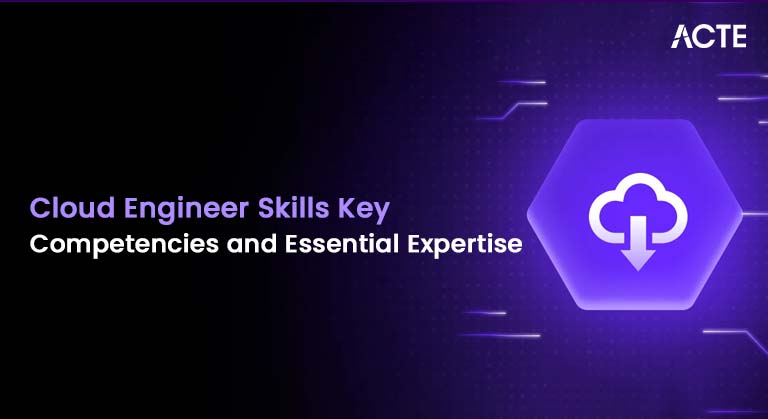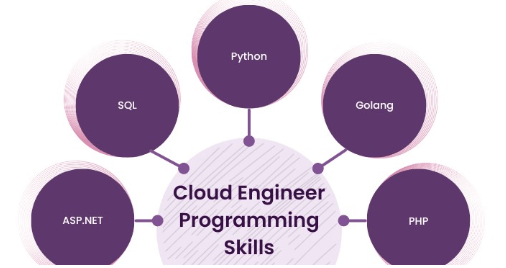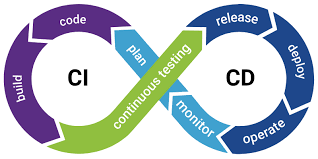
- Introduction to Cloud Engineering Skills
- Cloud Computing Fundamentals
- Programming Languages for Cloud Engineers
- Networking Concepts in Cloud Computing
- Cloud Security Best Practices
- Infrastructure as Code (IaC) Tools
- DevOps and CI/CD Integration in the Cloud
- Monitoring and Logging in Cloud Environments
- Cloud Service Providers (AWS, Azure, GCP)
- Disaster Recovery and Backup Strategies
- Soft Skills Required for Cloud Engineers
- Conclusion
Introduction to Cloud Engineering Skills
Cloud Engineering is an essential discipline within the realm of Information Technology (IT). It focuses on designing, building, and managing scalable cloud infrastructure to support applications, services, and systems. Cloud Engineers ensure that organizations can efficiently and securely deploy their software solutions to the cloud, maintaining high availability, scalability, and security. As the demand for cloud services grows, cloud engineers must acquire broad technical skills to meet the challenges of diverse cloud environments. This article explores the core competencies that define cloud engineering and highlights the technical and soft skills required to thrive in the field.
Cloud Computing Fundamentals
Before diving into specialized cloud engineering skills, it’s essential to have a strong understanding of the fundamental concepts of Cloud Computing:
Cloud Models:- IaaS (Infrastructure as a Service): provides virtualized computing resources over the Internet. Examples include AWS EC2 and Google Compute Engine.
- PaaS (Platform as a Service): This type of service offers hardware and software tools over the Internet, typically for app development. Examples include Google App Engine and Azure App Service.
- SaaS (Software as a Service): Provides software applications over the Internet. Examples: Google Workspace and Microsoft 365. Cloud Deployment Models:
- Public Cloud: Resources are provided over the Internet and shared across multiple organizations (e.g., AWS, Azure).
- Private Cloud: The cloud infrastructure is used exclusively by one organization.
- Hybrid Cloud: A combination of private and public cloud services orchestrated between the platforms.
- Cloud Service Models: Cloud computing typically leverages shared resources, scalability, elasticity, and self-service provisioning to create a more efficient business infrastructure.
Understanding these fundamental cloud computing concepts is crucial for cloud engineers, as it lays the foundation for the tools and techniques they’ll use to build and manage cloud environments.
Programming Languages for Cloud Engineers
Proficiency in programming languages is crucial for cloud engineers, as their work often involves automating cloud infrastructure, integrating with cloud APIs, and developing cloud-native applications. Python is one of the most widely used languages in cloud engineering, valued for its versatility in scripting, automation, infrastructure management, and API interactions. JavaScript is essential for building cloud-based applications, particularly in front-end development and serverless architectures like AWS Lambda and Azure Functions. Go (Golang) is gaining popularity for its efficiency and scalability, making it ideal for high-performance applications and microservices. Java remains a key language for enterprise-level cloud applications, commonly used with platform-as-a-service (PaaS) solutions like Google App Engine and AWS Elastic Beanstalk. Additionally, Shell Scripting (Bash) is widely used for automating tasks, managing cloud instances, and handling configurations across cloud environments. Mastering these languages enables cloud engineers to streamline automation, optimize system integration, and develop robust cloud solutions.

Networking Concepts in Cloud Computing
Cloud Engineers must understand networking principles, as most cloud environments are based on distributed systems. Knowledge of networking enables engineers to design secure, scalable, and highly available systems. Key networking concepts include:
- Virtual Private Cloud (VPC): A private, isolated portion of the cloud where resources can be securely connected. It includes subnetting, IP addressing, and routing to control traffic.
- Load Balancers: Distribute incoming network traffic across multiple servers to ensure high availability and reliability of applications.
- DNS (Domain Name System): Converts human-readable domain names into machine-readable IP addresses. In cloud computing, engineers must set up and manage DNS records to ensure smooth application access.
- VPN (Virtual Private Network): A VPN securely connects a private network to cloud resources over the Internet. It ensures encrypted communication between on-premises infrastructure and cloud environments.
- Firewalls: A key aspect of cloud security, firewalls control the traffic allowed to and from cloud resources based on predefined rules.
- Subnets and CIDR: Subnets segment a VPC into smaller networks, and CIDR (Classless Inter-Domain Routing) notation defines IP address ranges for those subnets.
Understanding these networking fundamentals is crucial for cloud engineers to effectively build and secure cloud environments.
Cloud Security Best Practices
Security in the cloud is paramount due to the sensitive nature of data and the critical importance of system availability. Cloud engineers must adopt best practices for securing cloud environments, such as:
- Identity and Access Management (IAM): Implement strict control over who can access cloud resources and what actions they can perform. This includes using role-based access control (RBAC) and least privilege access policies.
- Encryption: To protect sensitive information, always encrypt data at rest and in transit. Cloud providers offer encryption tools like AWS KMS and Azure Key Vault.
- Multi-Factor Authentication (MFA): Enable MFA, which requires more than one form of authentication, to ensure that users access the cloud environment securely.
- Security Monitoring: Use tools like AWS CloudTrail, Azure Security Center, and Google Cloud Operations to monitor cloud resources for suspicious activities and vulnerabilities continuously.
- Patch Management: Regularly update and patch cloud instances and services to address security vulnerabilities.
- Compliance and Governance: Ensure cloud environments comply with industry standards and regulations, such as GDPR, HIPAA, and SOC 2.
A strong focus on security ensures that cloud-based systems remain resilient to threats and attacks, keeping organizational data safe.
Infrastructure as Code (IaC) Tools
Infrastructure as Code (IaC) enables cloud engineers to automate the setup and configuration of cloud infrastructure using code, eliminating manual intervention, reducing errors, and improving deployment consistency. Common IaC tools include Terraform, an open-source tool that allows users to define infrastructure using declarative configuration files, supporting multiple cloud providers and multi-cloud environments. AWS CloudFormation, a native AWS IaC tool, enables users to define and provision infrastructure using JSON or YAML templates. Ansible, primarily used for configuration management, also supports cloud provisioning and application deployment. Azure Resource Manager (ARM) automates infrastructure management in Azure using templates. IaC is a fundamental skill for cloud engineers, allowing them to build and maintain cloud infrastructure efficiently, securely, and with greater scalability.
DevOps and CI/CD Integration in the Cloud
Cloud engineers are often required to integrate DevOps principles into the cloud environment, enabling continuous integration and continuous delivery (CI/CD). Integrating DevOps with cloud infrastructure allows teams to automate and streamline the software development lifecycle. Key practices include:
- CI/CD Pipelines: Automating code integration, testing, and deployment using tools like Jenkins, GitLab CI, and Azure DevOps.
- Automation: Automating provisioning, configuration management, and application deployment through Terraform, Ansible, and Chef.
- Monitoring and Logging: Ensuring systems are continuously monitored with tools like Prometheus, Grafana, CloudWatch, and Google Stackdriver.
- Version Control: Integrating cloud infrastructure management with version control systems like Git to track changes to both code and infrastructure.
DevOps practices enable teams to rapidly deliver software and services, while cloud engineers ensure the infrastructure is correctly set up to support these practices.

Monitoring and Logging in Cloud Environments
Proactively monitoring cloud infrastructure and applications is essential for ensuring reliability, availability, and performance. Cloud engineers rely on monitoring tools to track system health, application performance, and resource utilization. AWS CloudWatch provides real-time monitoring of AWS resources and applications, offering logs and metrics for troubleshooting. Google Cloud Operations (formerly Stackdriver) integrates with Google Cloud to deliver insights into applications and infrastructure. Prometheus and Grafana are widely used for monitoring cloud applications, visualizing metrics, and setting up alerts. The ELK Stack (Elasticsearch, Logstash, and Kibana) is a powerful toolset for aggregating, searching, and visualizing logs from various cloud services. Effective monitoring and logging are critical for maintaining cloud environments, enabling engineers to quickly detect and resolve issues that could impact service quality.
Cloud Service Providers (AWS, Azure, GCP)
A cloud engineer must be proficient in working with at least one primary cloud service provider. Each cloud provider has its suite of tools and services, and cloud engineers must be familiar with the best practices for using these platforms:
- Amazon Web Services (AWS): The most widely used cloud platform, offering services like EC2, S3, Lambda, RDS, and more.
- Microsoft Azure: A strong contender in the enterprise space, Azure offers services such as Virtual Machines, App Services, and Azure Kubernetes Service (AKS).
- Google Cloud Platform (GCP): Known for its strengths in machine learning, big data, and Kubernetes, GCP offers services like Compute Engine, App Engine, and BigQuery.
Cloud engineers must be proficient with at least one cloud provider, and familiarity with multiple providers can enhance career opportunities.
Disaster Recovery and Backup Strategies
Disaster recovery is a critical responsibility for cloud engineers, ensuring that data and services are protected and can be quickly restored in case of failure. Automated backups play a key role by scheduling regular backups of cloud resources, including databases, file storage, and applications. Multi-region or multi-availability zone (AZ) redundancy further enhances resilience by storing backups across different locations, ensuring availability even if one region fails. Failover systems are another essential strategy, enabling automatic traffic redirection to healthy instances during an outage. Additionally, data replication across regions ensures business continuity by maintaining up-to-date copies of critical data. These disaster recovery strategies help minimize downtime, protect against data loss, and maintain seamless operations in cloud environments.
Soft Skills Required for Cloud Engineers
In addition to technical expertise, cloud engineers should possess strong, soft skills to succeed in their roles:
- Problem-Solving: The ability to troubleshoot and resolve complex issues in cloud environments.
- Collaboration: Working with development, operations, and security teams to ensure effective cloud deployments.
- Communication: Explain technical concepts clearly to non-technical stakeholders and write clear documentation.
- Adaptability: The cloud space evolves rapidly, so cloud engineers must be able to adapt to new technologies, tools, and processes.
Conclusion
Cloud Engineering is a dynamic and rewarding field that requires a broad set of technical and soft skills. As cloud technology evolves, engineers must stay current with new tools, best practices, and security measures. By developing strong programming, networking, cloud security, infrastructure automation, and monitoring skills, cloud engineers will be well-equipped to build and manage scalable, reliable, and secure cloud environments.





